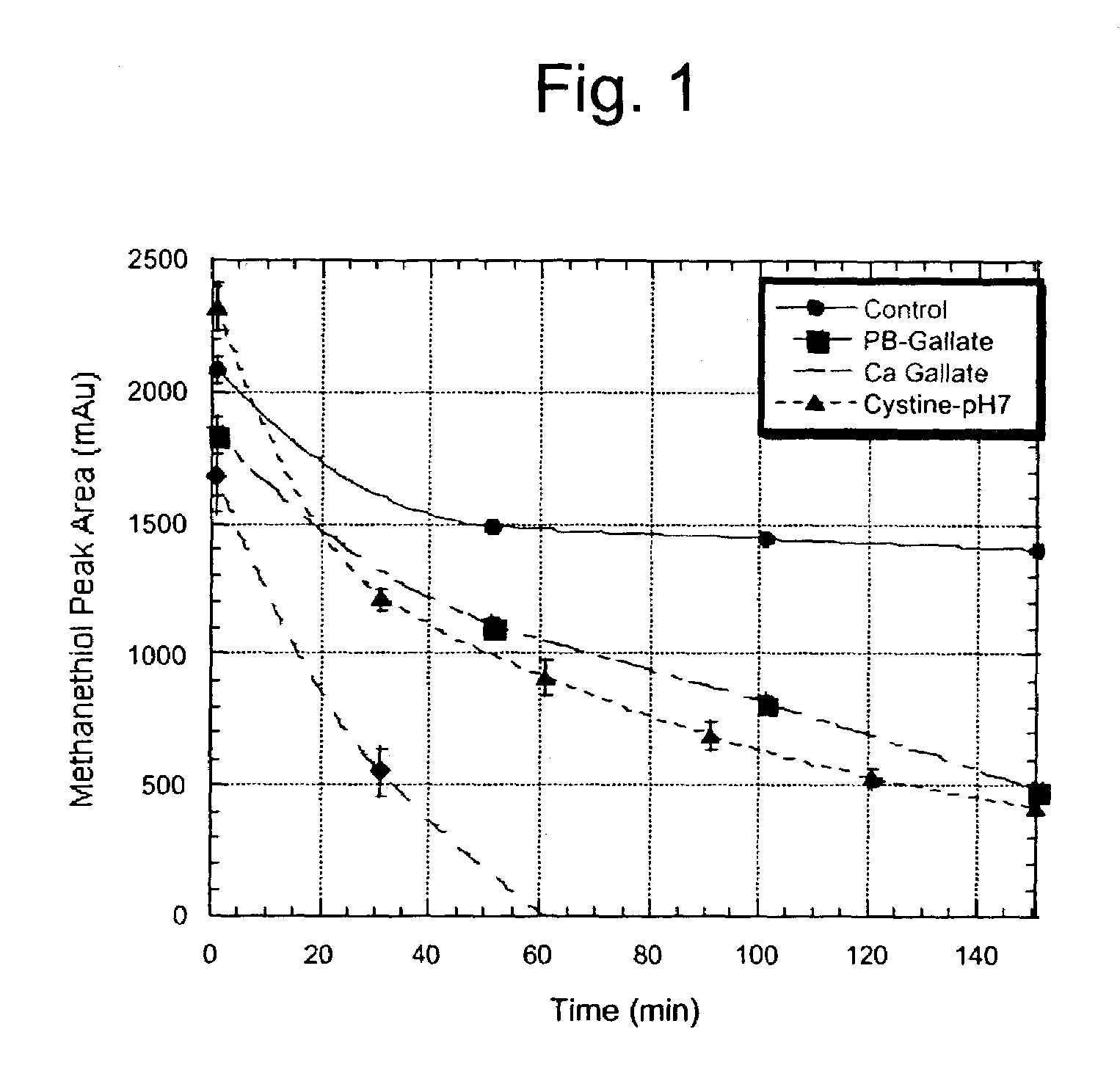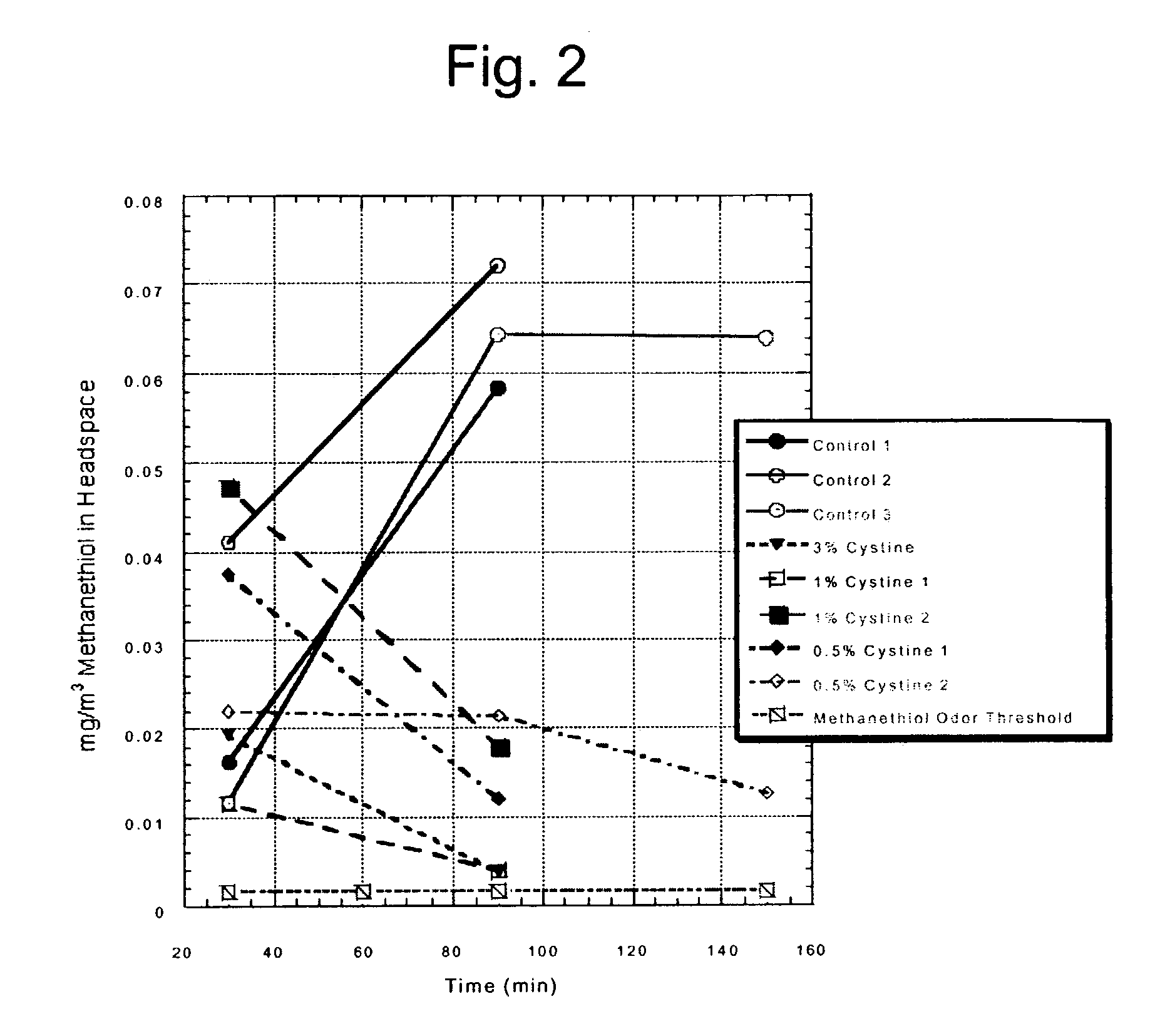Modified soy products and methods for reducing odor and improving flavor of soy products
a technology of soy products and modified soy products, which is applied in the direction of biocide, plant/algae/fungi/lichens ingredients, working proteins, etc., can solve the problems of significant lowering sensory scores and deemed unacceptable, and achieve the effect of reducing the concentration of odor producing compounds and reducing offensive odor and flavor
- Summary
- Abstract
- Description
- Claims
- Application Information
AI Technical Summary
Benefits of technology
Problems solved by technology
Method used
Image
Examples
example 1
Preparation of Soymilk and SPI
[0039]Soybeans and defatted flour were obtained from the Archer Daniels Midland Company (Decatur, Ill.). For soymilk, whole soybeans were soaked in water for 10 hours, drained and rinsed several times. The hydrated soybeans were combined with water (1 part soybeans to 10 parts water). The soybeans / water mixture was then ground in a Waring blender on medium speed for one minute. The resulting slurry was immediately transferred into a glass flask and placed in a boiling water bath. The soybean slurry was stirred and brought to 85° C. within 8 minutes where it was held for 15 minutes. The soymilk was then cooled to 40° C. in an ice bath, filtered through cheesecloth, bottled and refrigerated (4° C.). L-cystine was added directly to the process water prior to adding the soybeans to achieve an overall concentration of 300 ppm.
[0040]Laboratory SPI was prepared by dispersing hexane-defatted soybean flour in water (1 part flour to 10 parts water) at 22° C. foll...
example 2
The Effect of Adding L-cystine to Commercial SPI Slurries
[0046]FIG. 1 shows that added L-cystine is about as effective at “removing” methanethiol from solution at pH 7 as gallic acid is at pH 8. Data for L-cystine is the mean values from duplicate runs with each of two different sources (Sigma Chemical Co. and ICN Biomedicals Inc.). Other advantages of L-cystine is that it is already a “generally recognized as safe” (GRAS) food additive and it contributes no color. Because it is effective at neutral pH, its effect can be observed by simply dry-mixing with SPI prior to adding water. This is shown in FIG. 2. Rather than the typical increase in sulfur-containing odorants in the headspace above SPI slurries over time, L-cystine causes a substantial reduction in methanethiol. In the controls, the level of methanethiol increased to as high as 45 times above its odor threshold while the addition of 0.5 percent L-cystine prevented this increase, and even contributed to a decrease, of methan...
example 3
Results from a New Rapid Method for Quantifying Methanethiol and DMTS in the Headspace above the Soy Product
[0048]Boatright (2000) defined the typical levels of DMTS in soy protein products by stating that “levels less than 0.05 parts per million would also improve flavor and odor. He went on to demonstrate a method of quantifying DMTS using a stable-isotope labeled DMTS as an internal standard. Using this method, levels of DMTS in two soy protein isolates (SPI) were shown to be 0.06 and 0.045 parts per million (dry basis). Furthermore, the typical levels of methanethiol in soy protein products was defined by stating that “levels less than 0.1 parts per million would also improve flavor and odor.” Lei and Boatright quantified methanethiol in aqueous slurries of soy protein isolates and concentrates using a derivatization procedure with ethanethiol as an internal standard. The level of methanethiol was 0.237 and 0.167 ppm (dry basis) in two samples of SPI and 0.172 and 0.237 ppm (dry...
PUM
 Login to View More
Login to View More Abstract
Description
Claims
Application Information
 Login to View More
Login to View More - R&D
- Intellectual Property
- Life Sciences
- Materials
- Tech Scout
- Unparalleled Data Quality
- Higher Quality Content
- 60% Fewer Hallucinations
Browse by: Latest US Patents, China's latest patents, Technical Efficacy Thesaurus, Application Domain, Technology Topic, Popular Technical Reports.
© 2025 PatSnap. All rights reserved.Legal|Privacy policy|Modern Slavery Act Transparency Statement|Sitemap|About US| Contact US: help@patsnap.com


